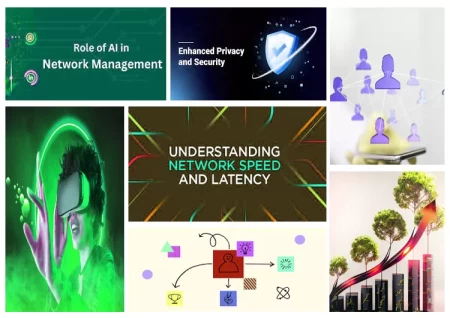5G vs. 6G: What to Expect from the Next Generation of Connectivity

The development of connectivity technologies has dramatically changed the way people communicate, operate in various industries, and even live their daily lives. As 5G technology is rolled out incrementally across the globe, its uses run from smart cities and IoT applications through to autonomous vehicles. However, what comes next in the wireless innovation pipeline, 6G connectivity, is already beginning to make some noise. Below, discover the differences between 5G and 6G, the possibilities offered by 6G, and when it is expected to happen.
Understanding 5G Technology
5G is a step from 4G LTE by offering incredible speed internet connectivity with extremely low latency and with tens of millions of devices connected. The capabilities of 5G are changing industries and consumer experiences worldwide.
Key Features of 5G
- Enhanced Mobile Broadband (eMBB): up to 10 Gbps, and it promises smooth streaming and gaming and communication.
- Massive IoT : It can support millions of devices per square kilometer; it holds up strong towards its superb smart city ecosystems.
- Ultra-Reliable Low-Latency Communication (URLLC): Real-time applications such as remote surgeries and autonomous vehicles with latency as low as 1 millisecond.
Current Applications of 5G
- Smart Cities: Smarter management of energies, smarter traffic control, innovations for public safety. Industry 4.0: Automation, predictive maintenance, and robotics in the factory.
- Health Care Innovations: Telemedicine, remote surgeries, and real-time monitoring
Less than balanced coverage and high energy density of these benefits create an argument for near-term progress.
What is 6G Technology?
6G, the sixth generation of wireless technology, will roll into our lives by 2030, when the success of 5G will have solidified its foundation. That is, after all, the idea to do much more than merely hurrying up the Internet-ness-the networks are actually designed to connect the physical and digital worlds seamlessly.
Expected Features of 6G
- Terahertz Spectrum Utilization: Data rate to reach up to 1 Tbps.
- AI-Driven Networks: AI to aid, optimize networks in real time and efficiently manage resource utilization.
- Extended Reality (XR): Augmented, virtual, and mixed realities combined for maximum immersion
- Holographic Communication: High-resolution, real-time holographic interaction for work, education, and entertainment.
- Universal Reach: It can connect anybody in the world because of its extensive coverage even in rural and remote areas.
| Feature | 5G | 6G |
|---|---|---|
| Speed | Up to 10 Gbps | Up to 1 Tbps |
| Latency | ~1 ms | Sub-millisecond (near-zero) |
| Bandwidth | Limited | Terahertz (ultra-wideband) |
| AI Integration | Minimal | Extensive |
| Immersive Technologies | Basic AR/VR | Advanced XR and holographic tech |
| Coverage | Urban-focused | Global reach |
Challenges in Developing 6G
The 6G Road Map is not easy, some of which are;
- Technological Advancement: Cutting-edge enough to touch the terahertz frequency spectrum.
- Energy Efficiency: High frequencies have enormous consumption of energy that raise red flags over sustainability.
- Challenges it faces during regulation: Frequency harmonizing and world policy alignment to the same is part of them
- It Is Expensive: On top of that, this will add to digital divides already in place.
6G Deployment Timeline
The roadmap for 6G development spans several phases:
- 2024-2025: Early trials and proof-of-concept demonstrations.
- 2028: Global standardization of 6G protocols and technologies.
- 2030: Commercial rollout of 6G networks.
The Future of Connectivity
The Next Generation of Connectivity, in the form of 6G, promises to bring into play unprecedented possibilities. Since it brings solutions to the inefficiencies of 5G and incorporates disruptive technologies, everything-from living, working, to communicating with the world around us-will be changed.
From immersive holographic communication to global digital inclusion, 6G is that point of change in the way connectivity works. While paving the road ahead through 5G and 6G, it offers one step further to an intelligent hyperconnected future that will redefine the face of modern life.
Related queries to this article
- 5G technology
- 6G connectivity
- wireless innovation
- smart cities
- Internet of Things (IoT)
- autonomous vehicles
- enhanced mobile broadband
- ultra-reliable low-latency communication
- 6G roadmap
- holographic communication
- terahertz spectrum
- immersive technologies
Read more articles and stories on InstaSity Trending Topics.